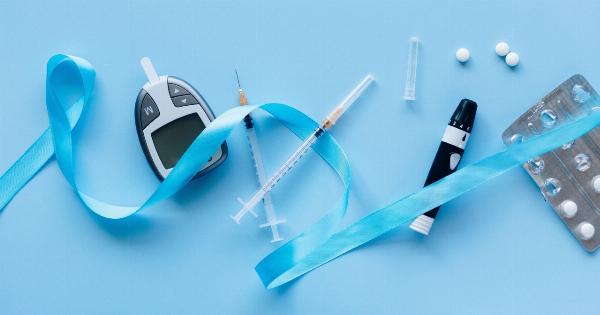Multi-drug resistant tuberculosis (MDR-TB) has emerged as a grave threat to public health in recent years, posing a significant challenge to healthcare systems across the globe.
This form of tuberculosis, caused by strains of Mycobacterium tuberculosis that are resistant to at least two of the most powerful anti-TB drugs, is not only difficult to treat but also spreads rapidly, making it a critical concern for both developed and developing countries. In this article, we will explore the explosive impact of multi-resistant tuberculosis in our society and discuss the urgent need for a comprehensive strategy to combat this growing epidemic.
Rising Cases of MDR-TB: A Global Crisis
The World Health Organization (WHO) estimates that there are over half a million new cases of MDR-TB each year, with nearly 10% of these cases being extensively drug-resistant tuberculosis (XDR-TB) – a form that is resistant to second-line drugs as well. The consequences of these rising numbers are far-reaching, affecting individuals, families, and communities worldwide.
The Socioeconomic Burden
MDR-TB not only poses a great threat to the health of individuals affected but also places a significant economic burden on societies.
The prolonged and costly treatment regimens required for MDR-TB can be financially devastating for patients and their families, especially in resource-limited settings. The loss of income due to illness or caretaking responsibilities leads to a vicious cycle of poverty and limited access to essential resources, perpetuating the spread of the disease within vulnerable populations.
Impact on Healthcare Systems
The explosive spread of multi-resistant tuberculosis strains puts an immense strain on already overloaded healthcare systems.
The complex treatment regimens and long-term care required for MDR-TB patients demand extensive resources, including trained healthcare professionals, specialized facilities, and a steady supply of costly medications. As a result, healthcare systems that are already struggling to meet the basic healthcare needs of the population find themselves further stretched, often leading to compromised quality of care for all patients.
The Threat in Developing Countries
Developing countries face the greatest challenges in combating multi-resistant tuberculosis due to various factors such as limited resources, weak healthcare infrastructure, and a high burden of other infectious diseases.
In these settings, the impact of MDR-TB is particularly devastating, leading to increased morbidity, mortality, and economic instability. Without adequate investment in healthcare infrastructure and access to effective diagnostics and treatment, the fight against MDR-TB becomes an uphill battle.
The Role of Drug Resistance in Tuberculosis
The development of drug resistance in tuberculosis is a complex process influenced by a combination of genetic, clinical, and environmental factors.
Improper and inconsistent use of anti-TB medications, including incomplete treatment courses and incorrect dosages, plays a significant role in the emergence of drug-resistant strains. Additionally, factors such as poor infection control measures, high population density, and co-infection with HIV further contribute to the spread of drug-resistant tuberculosis.
The Need for Comprehensive Strategies
The explosive impact of MDR-TB necessitates the implementation of comprehensive strategies to address this growing epidemic. Efforts must focus on several key areas:.
1. Strengthening Healthcare Infrastructure
Investments in healthcare infrastructure, particularly in developing countries, are essential to ensure access to accurate diagnoses, appropriate treatment, and adequate care for MDR-TB patients.
This includes the establishment of specialized treatment centers, diagnostic laboratories, and the training of healthcare personnel to effectively manage and control the spread of multi-resistant tuberculosis.
2. Improving Infection Control Measures
Stringent infection control measures are critical to prevent the spread of MDR-TB within healthcare facilities and the community.
This includes ensuring proper ventilation, implementing isolation protocols, and promoting awareness among healthcare workers and the general population about the importance of adherence to infection control practices.
3. Strengthening Surveillance and Reporting Systems
Efficient surveillance and reporting systems are crucial for monitoring the prevalence, spread, and drug resistance profiles of tuberculosis strains.
This data is essential for guiding policy decisions, resource allocation, and targeted interventions aimed at reducing the impact of multi-resistant tuberculosis.
4. Promoting Research and Development
Investment in research and development of new drugs, diagnostics, and vaccines for tuberculosis is essential to combat multi-resistant strains.
The development of shorter, more effective treatment regimens and point-of-care diagnostics will improve patient outcomes and help reduce the burden on healthcare systems.
5. Enhancing International Collaboration
Tuberculosis does not recognize borders, and effective control of MDR-TB requires international collaboration.
Sharing best practices, resources, and expertise among countries is crucial to strengthen efforts in combating multi-resistant tuberculosis and prevent its further spread on a global scale.
Conclusion
The explosive impact of multi-resistant tuberculosis in our society cannot be underestimated.
The rise of MDR-TB poses a significant threat to public health, putting a strain on healthcare systems, causing socioeconomic burdens, and threatening the lives of individuals worldwide. Urgent action is required to strengthen healthcare infrastructure, improve infection control measures, enhance surveillance systems, promote research and development, and facilitate international collaboration.
Only through a comprehensive and coordinated effort can we hope to successfully combat the growing epidemic of multi-resistant tuberculosis and safeguard the health and well-being of our society.































